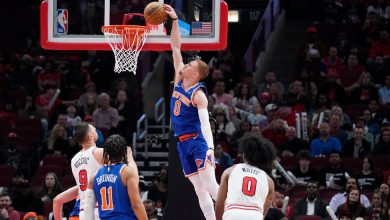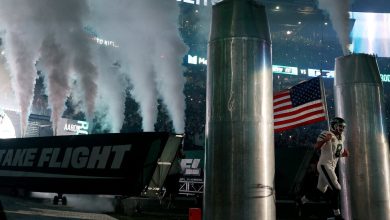Curley Culp, Defensive Anchor of Two Football Teams, Dies at 75

Curley Culp, whose strength, agility and quickness helped him anchor the great defenses of the Kansas City Chiefs and Houston Oilers in the 1960s and ’70s and led to his election to the Pro Football Hall of Fame, died on Saturday in a hospital in Pearland, Texas, south of Houston. He was 75.
His wife, Collette Culp, said the cause was pancreatic cancer.
Culp was a potent force as a defensive tackle. A former college wrestler who stood 6-foot-1 and weighed 265 pounds, Culp manhandled opposing offensive lineman, especially centers, and was known for wrapping up quarterbacks in his massive arms. In his 14-year career, he had 68½ sacks.
When Culp was traded as a rookie to the Chiefs from the Denver Broncos in 1968, he joined a defensive unit stacked with four other future Hall of Famers: Buck Buchanan, a 6-foot-7 tackle; linebackers Bobby Bell and Willie Lanier, and the cornerback Emmitt Thomas.
“It was almost unfair to have Culp and Buchanan and Lanier and all those guys,” Joe Namath, the Jets’ star quarterback of that era, told The Kansas City Star in 2013. “How did they find all those guys in Kansas City?”
In 1970, the Chiefs faced the Minnesota Vikings, who were favored by 13 points, in Super Bowl IV. Hank Stram, the Chiefs’ coach, shifted Culp on the line to directly take on Mick Tingelhoff, the Vikings’ center (who died in September at 81). Culp overpowered Tingelhoff, allowing Buchanan, Bell and Lanier to shut down the Vikings’ running attack and exert pressure on quarterback Joe Kapp.
The Chiefs won, 23-7, the second consecutive victory by an American Football League team over a heavily favored N.F.L. rival, following the Jets’ win over the Baltimore Colts.
“I don’t think it was easy,” Culp said after the game. “It was determination on our part.”
Culp spent six full seasons with the Chiefs, was selected to play in two Pro Bowls and in 1973 had as many as nine sacks, well before they became an official N.F.L. statistic in 1982.
Before the 1974 season, Culp signed a contract to play the next year for the Southern California Sun of the upstart World Football League, which was raiding the N.F.L. for star players. Six games into the season — with the Chiefs’ record at 2-4 — Stram traded Culp and a No. 1 draft choice to the Houston Oilers (now the Tennessee Titans) for John Matuszak, a 6-foot-8 defensive tackle.
“They were trying to help the defensive line in Kansas City, knowing I would be lost the next season, and two, they just wanted to slap me in the face,” Culp told The Star. “You look around the league. There aren’t many people who have signed with the World that are still on their original teams.” Lanier later said that the Chiefs had made a poor decision.
“After we traded Curley,” he told The Houston Chronicle in 2013, “we just started coming apart.”
Culp finished the season with the Oilers but never made the leap to the Sun, after the team had failed to make guaranteed payments to him. He signed a four-year deal with Houston, and the W.F.L. folded during the 1975 season.
Culp was as successful in Houston as he was in Kansas City. Under Coach Bum Phillips, the Chiefs played a 3-4 defense, which featured three down lineman and four linebackers. As the nose tackle — situated between two defensive ends and opposite the center — Culp revolutionized the position and had his best season in 1975, with 11½ sacks. He was named Defensive Player of the Year by the Newspaper Enterprise Association. And he was chosen for four more Pro Bowls.
Culp remained an integral part of the Oilers’ defense through the 1978 and ’79 seasons, both of which led to appearances in the American Football Conference championship games, each ending in a loss to the Pittsburgh Steelers. The Oilers waived him during the 1980 season, and he signed with the Detroit Lions, then played with them through the 1981 season before retiring.
One of his Oilers teammates, defensive end Elvin Bethea, another Hall of Famer, described Culp in action. “Curley had these thick, nasty forearms that were hard as rocks,” he told The Chronicle. “He’d use those forearms to hit centers on the side of the head. He’d knock them off balance and their ears would be ringing.”
He added: “The rules were different then.”
Curley Culp was born on March 10, 1946, in Yuma, Ariz. His father, William, owned a pig farm, and his mother, Octavia (Whaley) Culp, was a homemaker. His parents named him Curley because it rhymed with Shirley, his twin sister, who was born first.
Curley worked on the farm, and during the summer, to earn extra money, he and some of his brothers traveled to farms in California to load watermelons onto trucks.
Culp wrestled and played football in high school. At Arizona State University, he won the N.C.A.A. heavyweight title in 1967, pinning his finals opponent in 51 seconds. He was an All-American in both sports.
“I think I liked wrestling even more than football,” he told The Star, adding that “some of the skills that are necessary to compete are transferable from wrestling to football. The agility, the hand-to-hand combat, the quickness.”
The Broncos selected Culp in the second round of the 1968 N.F.L. draft. (He went on to graduate from Arizona State in 1970 with a bachelor’s degree in business and insurance.) But Denver’s attempt to convert him from defensive tackle to offensive guard failed, and the team traded him to Kansas City during training camp.
After his N.F.L. career, Culp ran a chemical and pest control company, then owned a taxicab and limousine service. He earned a master’s degree in health and human performance from the University of Houston in 1990.
Culp married Collette Bloom in 1978. In addition to her, he is survived by his sons, Chad and Christopher; seven grandchildren; his sister, Shirley Culp McFarlin; and his brother William Jr.
By the time Culp was enshrined in the Pro Football Hall of Fame in Canton, Ohio, in 2013, he had been retired for 32 years. Bell, Lanier,



